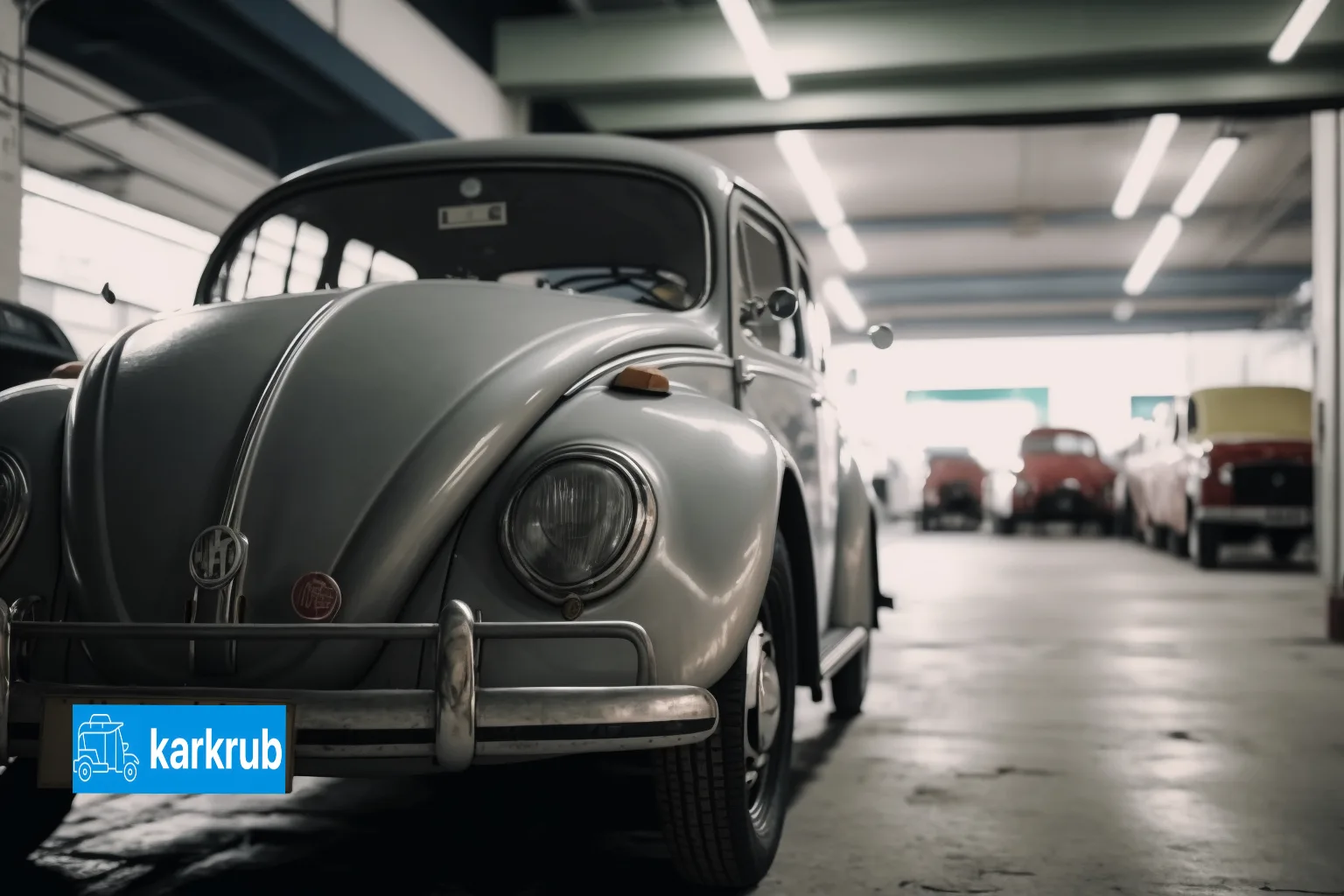Karkrub Review
Specs of the Car:
The 1966 Volkswagen Beetle 1300 Sedan saw several upgrades from its predecessors. The most notable was its 1.3-liter, four-cylinder engine, which produced 50 horsepower and was mated to a 4-speed manual transmission. This particular model featured a rear-wheel-drive system, drum brakes on all four wheels, and a classic 12-volt electrical system. Its compact design housed seating for four passengers, and it weighed approximately 800 kg.
History of the Model:
The Volkswagen Beetle, affectionately called the “Bug” or “Käfer” in German, remains one of the most iconic cars ever produced. Originally conceived in the 1930s by the famed Ferdinand Porsche at the behest of Adolf Hitler, the Beetle was intended to be the “people’s car” – affordable, reliable, and easy to maintain. Post-World War II, the Beetle saw a significant uptick in production and popularity, becoming synonymous with the economic miracle of West Germany. By the mid-60s, the Beetle had become a global phenomenon, celebrated for its simplicity, durability, and unique design.
Development of the Model:
By the time 1966 rolled around, the Beetle had already undergone numerous refinements. The 1966 1300 Sedan marked a significant milestone in the Beetle’s evolution, as Volkswagen replaced the previous 1200cc engine with a larger 1285cc (1.3-liter) engine. This change increased the car’s power output, and the 1300 moniker became synonymous with this uprated performance. Additionally, the electrical system was updated from 6 volts to 12 volts, making it compatible with the majority of automotive accessories available at that time.
Journalist Reviews at the Time of Release:
In the mid-60s, the automotive industry was undergoing a transformative phase with the muscle car era in the US and the rise of Japanese automakers. Against this backdrop, the 1966 Beetle, with its increased power and refined features, was praised for its reliability, economy, and unique charm. Many journalists admired the car’s build quality and its easy-to-maintain nature. The Beetle’s unmistakable silhouette, combined with its enhanced specs, gave it an edge in the compact car market. That said, some critiques revolved around its dated design and the car’s handling compared to more modern contemporaries.
Types of Modifications Typically Done:
The Beetle, over the years, has been a favorite amongst car enthusiasts and modifiers. The 1966 1300 Sedan was no exception. Common modifications included:
- Engine Swaps: Given the Beetle’s straightforward design, many owners opted to replace the stock engine with more powerful variants, including engines from Porsche.
- Suspension Upgrades: Lowering the Beetle or converting it to an adjustable suspension system was popular, enhancing the car’s stance and improving its handling characteristics.
- Exterior Customizations: From unique paint jobs to body kits, many Beetles received a personal touch. Accessories like roof racks, chrome embellishments, and aftermarket wheels were frequently added.
- Interior Upgrades: Custom upholstery, modern audio systems, and personalized dashboards were common modifications.
- Performance Boosts: Upgraded carburetors, exhaust systems, and brakes were sought after to enhance the Beetle’s performance.
In conclusion, the 1966 Volkswagen Beetle 1.3 Classic Car 1300 Sedan is not just a car; it’s an emblem of automotive history. Its simple yet enduring design, coupled with its fascinating history, makes it an evergreen favorite in the world of classic cars.
Karkrub Score
Design: 8/10
The 1966 Volkswagen Beetle boasts a timeless design. Its unmistakable silhouette, rounded features, and compact frame make it an iconic presence on the road. While it may not have been the pinnacle of modern design for its time, its charm, simplicity, and easily recognizable shape have granted it a special place in automotive history.
Power: 6/10
The 1.3-liter engine was a significant improvement over its predecessor, producing 50 horsepower. While this was decent for a compact car of its time, it falls short when compared to many other vehicles in the same era, especially sports cars and American muscle cars. It served its purpose for daily commuting but wouldn’t be labeled as ‘powerful’ by most standards.
Fun: 9/10
The Beetle has always been about the driving experience. Its rear-engine, rear-wheel-drive layout gave it a unique handling characteristic. While it might not be the fastest car off the line, the sheer joy of driving such an iconic and unique vehicle, combined with the manual transmission, gives it high marks in the fun department.
Comfort: 6/10
Interior comfort in the 1966 Beetle was basic. The seats, though adequate, lacked the kind of cushioning and ergonomic design that modern vehicles offer. The cabin was compact with limited legroom in the back. However, the simplicity of its interiors also meant fewer distractions and a very straightforward, no-nonsense driving experience.
Reliability: 9/10
One of the standout features of the Beetle was its reliability. Its air-cooled engine was simple to maintain and repair. The Beetle earned its reputation for being a durable machine that could withstand varied conditions, making it popular in diverse terrains and climates around the world.
Safety: 5/10
By modern standards, the 1966 Beetle wouldn’t score high on safety. Lacking features like airbags, crumple zones, and advanced braking systems, it’s a product of its time. However, its sturdy build and simplicity did offer some protection, but not nearly as much as contemporary safety-focused vehicles.
Value: 10/10
The Beetle offered incredible value for its price. Not only was it affordable, but its reliability and low maintenance costs made it a favorite for those seeking economical transportation. Its iconic status and enduring popularity mean that vintage models, especially well-maintained ones, have appreciated in value over the years.
Average Score: 7.6/10
In conclusion, the 1966 Volkswagen Beetle 1.3 Classic Car 1300 Sedan is an automotive icon that shone in several areas like design, reliability, and value. While it might have lagged in power, comfort, and safety compared to some of its contemporaries, it more than made up for it with its unique charm and driving experience.

Leave a Reply